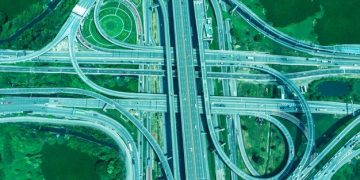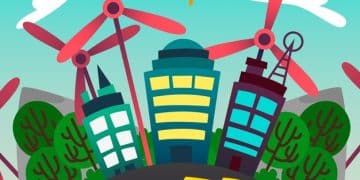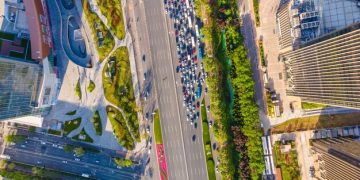Sustainable Transportation Options in the US: A Comprehensive Guide
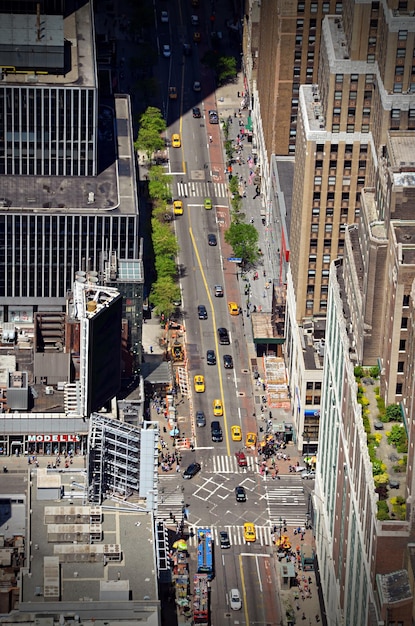
Exploring sustainable transportation in the US reveals a shift towards eco-friendly alternatives like electric vehicles, public transit, cycling, and walking, significantly reducing carbon footprints and promoting healthier communities nationwide.
In an era defined by environmental consciousness and the urgent need to mitigate climate change, the question of What are the Most Sustainable Transportation Options in the US? has become increasingly critical. From daily commutes to long-distance travel, the choices Americans make significantly impact ecological health and urban planning. This guide delves into the diverse array of eco-friendly transport methods available across the nation, exploring their benefits, challenges, and potential for widespread adoption.
Understanding Sustainable Transportation
Sustainable transportation encompasses modes of transport that have a low impact on the environment, promoting social equity and economic vitality. It’s about moving people and goods efficiently without compromising the ability of future generations to meet their own needs. In the US, the conversation around sustainable transport is evolving rapidly, driven by technological advancements, policy shifts, and a growing public awareness of climate issues. It goes beyond simply reducing emissions; it also considers resource consumption, land use, noise pollution, and social accessibility.
The goal is to create a transportation system that is environmentally sound, socially inclusive, and economically viable. This means designing cities where walking and cycling are safe and convenient, investing in robust public transit networks, and encouraging the adoption of clean energy vehicles. The transformation of the transportation sector is not merely an environmental imperative but also an opportunity to foster healthier, more livable communities.
Examining current trends reveals a multifaceted approach. From the individual decision to cycle to work to large-scale federal investments in electric vehicle infrastructure, every effort contributes to building a more sustainable future. This section lays the groundwork for understanding the principles and importance of sustainable transportation before diving into specific options.
The pillars of sustainability in transport
- Environmental Protection: Minimizing air pollution, greenhouse gas emissions, noise pollution, and resource depletion.
- Social Equity: Ensuring accessible and affordable transportation for all, reducing disparities in mobility and public health.
- Economic Viability: Creating cost-effective solutions that support economic growth without burdening public finances or individual consumers excessively.
These pillars illustrate that sustainable transportation is a holistic concept, demanding integrated solutions that address various societal and environmental needs simultaneously. It’s not just about one technology or one policy, but a combination of synergistic efforts.
Electric vehicles and charging infrastructure
Electric vehicles (EVs) stand at the forefront of sustainable transportation in the US. With zero tailpipe emissions, they offer a significant advantage over traditional gasoline-powered cars in reducing air pollution and greenhouse gas emissions. The market for EVs has expanded dramatically, offering a wide range of models from sedans to SUVs, and even electric trucks are becoming more common. This growth is supported by ongoing advancements in battery technology, which are leading to increased range and reduced charging times.
However, the widespread adoption of EVs is heavily reliant on the availability and accessibility of charging infrastructure. Significant investments are being made across the country to build out a robust network of charging stations, including fast chargers along major highways and standard chargers in urban and suburban areas. Government incentives, both federal and state, play a crucial role in encouraging consumers to switch to EVs and in supporting the development of this infrastructure.
While the electricity used to charge EVs may not always come from renewable sources, the overall carbon footprint of an EV is generally lower than that of a conventional vehicle, especially as the US grid incorporates more renewable energy. The environmental benefits extend beyond air quality, contributing to reduced noise pollution in urban centers and decreasing reliance on fossil fuels derived from geopolitical volatile regions.
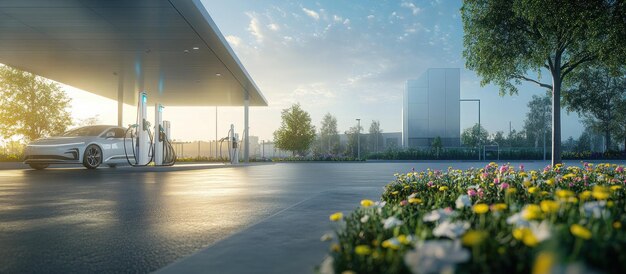
Government incentives and policies
- Federal Tax Credits: Offering significant financial relief for purchasing new and used electric vehicles.
- State-Level Rebates: Many states provide additional incentives, sometimes stacking with federal credits, to further reduce the cost of EVs.
- Infrastructure Grants: Programs aimed at expanding the network of public and private charging stations.
These policies are critical for accelerating the transition to electric mobility. They help to overcome initial cost barriers and range anxiety, two of the primary concerns for potential EV buyers. As more charging options become available and vehicle prices decrease, EVs are set to become an even more dominant force in sustainable personal transport.
Public transportation: buses, trains, and subways
Public transportation systems, including buses, trains, and subways, are cornerstones of sustainable mobility in congested urban areas across the US. By moving large numbers of people in a single vehicle, public transit significantly reduces the number of individual cars on the road, thereby slashing traffic congestion, air pollution, and fuel consumption. Many urban dwellers rely on these networks for their daily commutes, connecting homes to workplaces, schools, and essential services.
The sustainability aspect of public transit is further enhanced when these systems shift towards electric or hybrid technologies. Electric buses, for instance, are becoming more common in major cities, offering quiet, emissions-free travel. Light rail and subway systems, often powered by electricity, represent some of the most efficient forms of mass transit available. Investments in expanding and modernizing public transit are crucial for accommodating growing populations and achieving emissions reduction targets.
Beyond environmental benefits, public transportation fosters community cohesion by providing equitable access to opportunities for everyone, regardless of vehicle ownership. It can also be a more affordable alternative to private car ownership, reducing household expenses related to fuel, insurance, and maintenance. Improving the frequency, reliability, and reach of public transit is a key strategy for making US cities more sustainable and livable.
Innovations in public transit
Cities like New York, Chicago, and San Francisco have long histories of robust public transit. Their continual efforts to update infrastructure and introduce cleaner vehicles exemplify the commitment to sustainability. Other cities are exploring Bus Rapid Transit (BRT) systems, which mimic light rail in efficiency and speed but utilize existing road networks, making implementation quicker and more cost-effective. The integration of smart technologies, such as real-time tracking apps, also boosts ridership by making public transit more convenient and predictable for users.
The shift towards integrating various modes of transport is also a significant trend. This includes seamless transfers between bus lines, train services, and even bike-sharing programs. Policymakers are increasingly recognizing public transit not just as a service, but as an essential component of a sustainable urban ecosystem. This perspective drives continued investment and innovation, aiming to make public transport the preferred choice for a broader segment of the population.
Active transportation: walking and cycling
Walking and cycling represent the epitome of sustainable transportation. These active modes require no fuel, produce zero emissions, and offer numerous health benefits for individuals. In the US, there’s a growing movement to make cities more walkable and bikeable, through infrastructure improvements such as dedicated bike lanes, shared-use paths, and pedestrian-friendly urban planning. This shift supports both environmental goals and public health initiatives, moving people away from sedentary lifestyles associated with car dependency.
For shorter distances, often referred to as “last mile” travel, walking and cycling are incredibly efficient and enjoyable. They reduce traffic congestion, parking demand, and the overall noise levels in urban environments. Many cities are also implementing bike-sharing and scooter-sharing programs, making active transportation even more accessible to residents and visitors who might not own a bicycle. These shared mobility options have diversified urban transport landscapes significantly.
The development of complete streets policies, which aim to design roads with all users in mind—pedestrians, cyclists, public transit riders, and motorists—is a vital step towards integrating active transportation into the fabric of American communities. Such initiatives are crucial for ensuring safety and encouraging wider adoption of these healthy, eco-friendly travel options. The push for active transport reclaims public spaces for community interaction rather than purely vehicular traffic.
Benefits extending beyond mobility
- Enhanced Public Health: Regular physical activity reduces risks of chronic diseases like obesity, heart disease, and diabetes.
- Reduced Air Pollution: Eliminating tailpipe emissions contributes directly to cleaner air, improving respiratory health for all urban residents.
- Community Building: Fostering vibrant street life, enhancing social interactions, and improving local business vibrancy.
- Cost Savings: Significant reduction in personal transportation costs for individuals.
These benefits highlight why investing in walking and cycling infrastructure is a win-win for sustainability and quality of life. As urban areas become denser, the value of space efficiency and health promotion from active transport only increases, signaling a future where more people choose to leave their cars at home.
Innovative forms of sustainable transit
Beyond the established options, several innovative forms of sustainable transit are emerging and gaining traction in the US. These solutions leverage advanced technology and creative urban planning to further reduce environmental impact and improve mobility. One such innovation is the rise of micro-mobility options beyond traditional bikes, including electric scooters and small electric bikes that can be rented on demand. These offer flexible and convenient solutions for short-distance travel, especially in dense urban corridors, effectively bridging gaps where public transit might not serve directly.
Another area of innovation includes advanced public transit systems, such as magnetic levitation (maglev) trains and hyperloop technology. While maglev trains are already operational in some parts of the world, their application in the US could revolutionize high-speed intercity travel, offering incredibly fast and energy-efficient long-distance options. Hyperloop, still in its developmental stages, promises even greater speeds in near-vacuum tubes, potentially making distant cities feel closer and further diminishing the need for carbon-intensive air travel or individual car trips.
In addition, autonomous vehicles (AVs) hold the potential to enhance sustainability, particularly when combined with ride-sharing models. If AVs are electric and operate in optimized routes to minimize traffic and maximize passenger capacity, they could significantly reduce per-passenger energy consumption and emissions. This future of transportation envisions a scenario where vehicle ownership decreases, replaced by efficient, on-demand, shared electric transport, making urban movement cleaner and more fluid. These innovations push the boundaries of what is possible in sustainable mobility, addressing challenges that current systems cannot.
Examples of future-focused solutions

In various cities, pilot programs for electric autonomous shuttles are already providing insights into how these vehicles can integrate into existing transit ecosystems. These shuttles often serve fixed routes in defined areas, such as university campuses or business parks, offering convenient and accessible transport. The data collected from these pilots is crucial for refining the technology and understanding public acceptance.
Furthermore, the concept of “Mobility-as-a-Service” (MaaS) is gaining traction. MaaS platforms integrate various forms of transport—public transit, ride-sharing, bike-sharing, and even car-sharing—into a single app, allowing users to plan, book, and pay for their journeys seamlessly. This holistic approach encourages users to choose the most efficient and sustainable mode for each part of their trip, rather than defaulting to private car use.
The role of policy and infrastructure
Shaping a sustainable transportation future in the US relies heavily on supportive governmental policies and robust infrastructure development. Without effective policy frameworks, even the most innovative technologies and modes of transport will struggle to achieve widespread adoption. Policies often include a mix of regulations, incentives, and investment programs designed to steer both consumers and industries towards greener choices. For instance, stricter emissions standards for vehicles and fuel efficiency mandates push manufacturers to innovate and produce more environmentally friendly models.
Infrastructure development is equally critical. This involves not only building out charging networks for EVs and expanding public transit lines but also creating safe and accessible pathways for pedestrians and cyclists. The development of integrated transport hubs, where different modes of transport converge seamlessly, can greatly enhance convenience and encourage modal shifts away from private cars. Smart city initiatives that use data to optimize traffic flow and public transport schedules also contribute significantly to efficiency and sustainability.
Furthermore, land-use planning plays a crucial role. Promoting mixed-use developments that combine residential, commercial, and recreational spaces reduces the need for long-distance travel and makes active transportation more viable. Policies that discourage urban sprawl and encourage compact, transit-oriented development help to create communities where daily needs are within walking or cycling distance, or easily accessible by public transport. This integrated approach ensures that sustainability is embedded into the very design of our communities.
Key policy and infrastructure initiatives
- Federal Infrastructure Bill: Allocating billions to upgrade public transit, build EV charging stations, and improve roads and bridges for all users.
- Zoning Reforms: Encouraging higher density, mixed-use developments near transit centers to reduce commute times and reliance on cars.
- Carbon Pricing Mechanisms: Although controversial, these policies aim to internalize the environmental costs of transportation, encouraging cleaner alternatives.
These initiatives, whether at federal, state, or local levels, are essential for creating an environment where sustainable transportation can thrive. They address the systemic barriers that often prevent individuals from choosing greener options, laying the groundwork for a more resilient and eco-conscious future. The commitment to these long-term strategies will define the pace of climate action in the US transportation sector.
Challenges and the path forward
Despite significant progress, the journey towards widespread sustainable transportation in the US faces numerous challenges. One primary hurdle is the sheer scale of the country and its existing car-centric infrastructure. Decades of urban planning centered around the automobile mean that many communities lack the infrastructure, such as comprehensive bike lanes or frequent public transit, to support alternative modes. Overcoming this requires substantial financial investment and a fundamental shift in planning paradigms.
Consumer behavior and cultural preferences also pose significant obstacles. For many Americans, car ownership is deeply ingrained in their lifestyle, symbolizing independence and convenience. Shifting this mindset requires not only better alternatives but also sustained public education campaigns highlighting the benefits of sustainable transport, from cost savings to environmental impact. The “range anxiety” associated with EVs and the perceived inconvenience of public transit are psychological barriers that need continuous addressing.
Another challenge lies in funding. While significant government investments are being made, the long-term maintenance and expansion of sustainable transport networks require consistent and innovative funding mechanisms. This could involve exploring carbon taxes, congestion pricing, or public-private partnerships. The intermittency of political will and changes in administration can also disrupt long-term plans, highlighting the need for bipartisan support for sustainable transport initiatives that transcend electoral cycles.
Addressing the hurdles
Technological limitations, particularly in battery technology for long-haul electric trucks or advanced biofuels for aviation, also need continuous research and development. While personal EVs are rapidly improving, decarbonizing all sectors of transport remains a complex scientific and engineering challenge. Addressing these challenges requires a concerted effort from policymakers, industry, researchers, and the public, all working together towards a common vision of a greener future. The path forward is not linear but involves continuous adaptation and innovation.
Ultimately, transforming the transportation landscape of the US into a sustainable one is an ambitious but achievable goal. It demands a holistic approach that integrates technology, policy, infrastructure, and changes in societal behavior—a complex ecosystem of solutions designed to propel the nation into a future where mobility is both efficient and ecologically responsible.
| Key Sustainable Option | Brief Description |
|---|---|
| ⚡ Electric Vehicles | Zero tailpipe emissions, contributing to cleaner air and reduced reliance on fossil fuels. |
| 🚌 Public Transit | Reduces individual car use, traffic, and pollution via buses, trains, and subways. |
| 🚶♀️🚴 Active Transport | Walking and cycling produce zero emissions, boost health, and reduce urban congestion. |
| 🚀 Innovative Solutions | Micro-mobility, hyperloop, and shared AVs offer future-focused, efficient options. |
Frequently asked questions about sustainable transportation
Sustainable transportation refers to modes of transport that are environmentally friendly, socially inclusive, and economically viable. This includes options that minimize air pollution, greenhouse gas emissions, and resource consumption, while also ensuring accessibility and affordability for all members of society. It aims to meet current mobility needs without compromising future generations’ ability to travel.
Electric vehicles (EVs) are generally considered more sustainable than gasoline cars due to zero tailpipe emissions, which significantly reduces local air pollution. Their overall sustainability depends on the electricity source (renewable vs. fossil fuels) and the full lifecycle impact of battery production and disposal. As grids get cleaner and battery recycling improves, EVs’ sustainability footprint continues to decrease.
Public transit systems contribute to sustainability by moving large numbers of people efficiently, reducing the need for individual cars. This leads to less traffic congestion, lower overall emissions, and more efficient land use. Many transit agencies are also transitioning to electric buses and trains, further enhancing their environmental benefits and supporting cleaner, quieter urban environments.
Walking and cycling are highly sustainable because they produce zero emissions, require no fuel, and offer significant public health benefits through physical activity. These active modes help reduce traffic, parking demand, and noise pollution in urban areas. Investing in pedestrian and cycling infrastructure promotes healthier communities and more livable cities, while also being cost-effective for individuals.
Government policies are crucial for promoting sustainable transportation through incentives, regulations, and infrastructure investments. These include tax credits for EVs, funding for public transit expansion, and mandates for mixed-use urban planning. Effective policies accelerate the adoption of cleaner transport options, address infrastructure gaps, and shift societal norms towards more environmentally conscious travel behaviors.
Conclusion
The quest for sustainable transportation in the US is a complex but vital endeavor, touching upon environmental health, economic stability, and social equity. From the burgeoning market of electric vehicles to the time-tested efficiencies of public transit and active travel, the nation is steadily moving towards a greener future. Innovative solutions continue to emerge, promising even more sustainable possibilities. However, the success of this transition hinges on continuous policy support, robust infrastructure development, and a collective shift in consumer mindset. By embracing these diverse options and addressing the lingering challenges, the US can pave the way for a transportation system that is not only efficient but also responsible, ensuring a healthier planet for generations to come.


